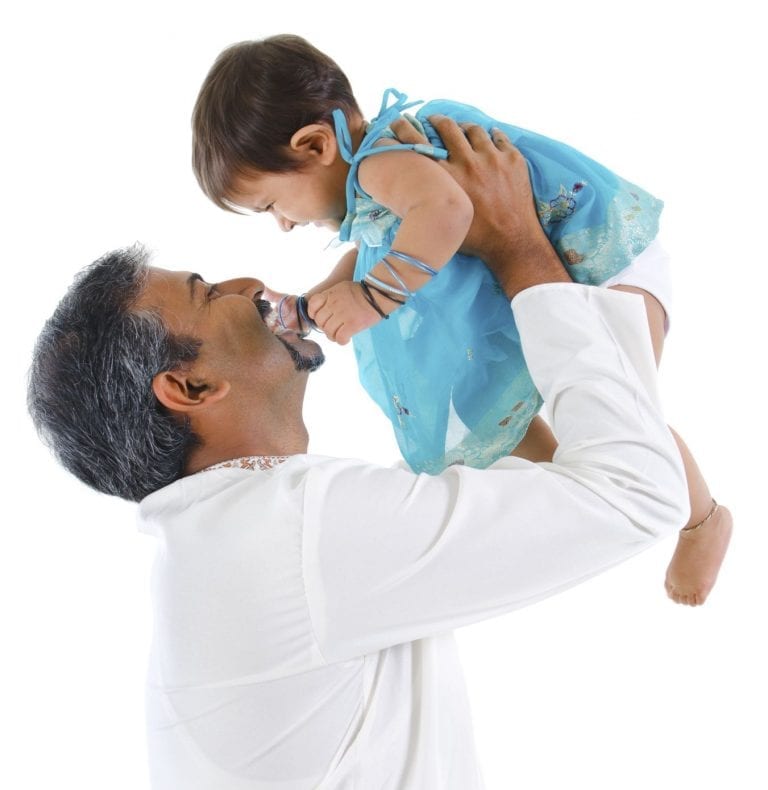Baby’s First Milestones 0-4 Months
Children reach milestones in how they move, play, speak, respond and behave. Skills such as smiling, laughing, playing peek-a-boo, crawling and walking are called “developmental milestones.” Let’s take a look at baby’s milestones 0-4 months.
Here’s what baby may be doing during their first 4 months.
Milestones can occur at different rates and stages in baby’s development. Experts have created guidelines, like the ones in this article, to help you know what to expect of babies of a similar age.
You are the most important person when it comes to baby’s learning. There are many things you can do to help your baby grow and learn during each stage of development. The American Academy of Pediatrics recommends that all children be screened for developmental delays and disabilities during regular well-child healthcare visits at 1, 2, 4, 6, 9 and 12 months after baby’s birth. Your baby may need more screening if they’re considered at risk for developmental problems from being born too early or having low birth weight, for example.
As a parent you know your child best. If you have questions about how your baby is behaving or growing, let your baby’s healthcare provider know immediately. Don’t wait—if indeed there is a problem, it’s important to get your baby help as soon as possible.
Baby’s Milestones 0-4 Months
Personal & Social Development
| Your baby may . . . | Baby might . . . | You can . . . |
| Express comfort and discomfort, enjoyment and unhappiness | Cry, smile, wiggle, fuss and use facial expressionsEnjoy soothing | Respond when they cryGive smiles, hugs, and other warm physical contact to help baby feel secure |
| Calm herself | Learn to close their eyes, suck on a fist or turn head away from distractionsBe quiet when you rock, sing, talk to her
Close their eyes when they’re sleepy |
Show baby your face and talk or hum softlyPlace your hand on baby’s stomach or back
Pick baby up and gently rock |
| Show interest in adults she knows | Fuss, cry, or coo to initiate interactionsTurn to voice that is familiar
Smile when seeing or hearing a person they recognize |
Make eye contact with baby regularlyUse gentle facial expressions and tones
Play “peek-a-boo” with baby |
| Show awareness of other children | Mimic children they recognize with facial expressions, noises or body language | Place baby near others when awakeLet baby watch and interact with children of all ages in a supervised setting |
| Demonstrate an attachment to certain people | Turn their head toward a familiar caregiverLook in the direction of your voice
Imitate your smile Track your movements |
Speak directly to babyMake eye contact when talking to baby |
Check out our diaper section for everything about Mindful Diapering including Diaper Rash Care Guide —- How Mindful Diapering Enhances Baby’s Development —- Diapering That Nurtures Your Baby and Prevent Diaper Rash plus much more.
Understanding & Communicating
| Your baby may . . . | Baby might . . . | You can . . . |
| Listen and express themselves | React strongly to noise by either being soothed or frightenedUse sounds and facial expressions of pleasure or displeasure
Babble or coo when hearing a voice Appear to “listen” Turn head to look at you |
Talk with baby directly and face-to-faceFollow their lead, and repeat sounds they’re making
Avoid talking loudly Play different kinds of music Sing and hum to baby |
| Recognize and react to the sounds of language | React to a new nursery rhyme by kicking legs; smile when hearing a familiar nursery rhymeRepeat sounds, enjoy and experiment with different sounds
Coo to conversation |
Repeat nursery rhymes, chants, and languageSing songs
Read with baby in your lap Talk about everyday objects |
| Begin to build a vocabulary | Show momentary attention to board books with bright colors and simple shapes especially facesReact to colors and shapes by cooing or moving their hands | Speak to babyRead and show baby simple books
Name objects |
Discovering and Learning
| Your baby may . . . | Baby might . . . | You can . . . |
| Begin to understand that they can make things happen | Play with their handsExplore toys with their hands and mouth
Turn their head to follow objects Turn their head toward loud noises Repeat enjoyable actions, such as shaking a rattle |
Provide a safe and stimulating environmentSupervise baby on the floor to promote movement
Play “peek-a-boo” Provide clean, safe toys for baby to hold Smile and give baby your complete attention to help them focus and interact |
Coordinating Movements
| Your baby may . . . | Baby might . . . | You can . . . |
| Use many repetitions to move various body parts | Bring hands together to grasp and shake toysReach for objects and swipe at dangling objects
Raise their head, arch their body and flex their legs Begin to try and roll over and sometimes kick themselves over Push up by hands or forearms when on stomach Bring their hands to their mouth |
Give baby lightweight rattles or soft, bright patterned toys that make soft noiseHave daily supervised “tummy time”
Support baby’s head when holding her Frequently change baby’s position when they’re awake |
We have a range of articles for your Baby’s Milestones:
First Words: Better Baby Babble






Comments are closed.